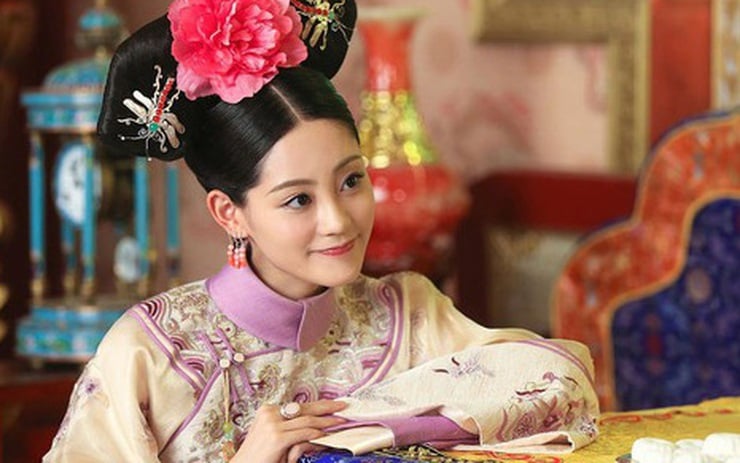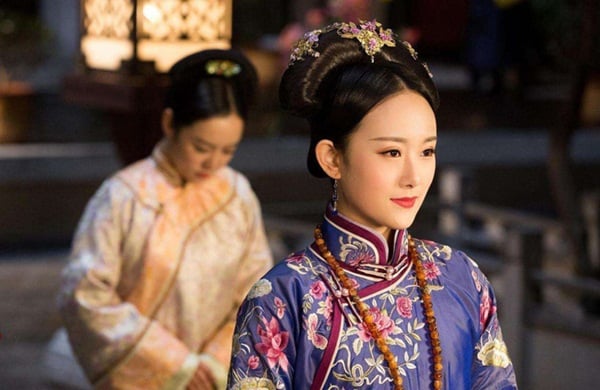Although not involved in the political affairs, during the Qing Dynasty, the concubines in the imperial harem had their own standards of treatment and a separate system of rewards and punishments. Although not involved in the political affairs, during the Qing Dynasty, the concubines in the imperial harem had their own standards of treatment and a separate system of rewards and punishments. Let’s explore the “salary” of the Qing Dynasty consorts. The high disparity in treatment led to fierce competition and tactics to gain favor.
“Salary” of the Qing Dynasty consorts
Few people know that despite living in luxury with servants, the empress, and consorts were not allowed to spend extravagantly. They could only use their stipends and rewards for their expenses.

It is known that, just like the officials in the Qing court, the “monthly salary” of the consorts and empresses was divided into different ranks and comprised various items such as food, money, jewelry, etc. Specifically:
+ The empress, as the highest rank in the Imperial Harem, received 1000 taels of silver per year.
+ The noble consort, the second highest rank after the empress, received about 800 taels of silver per year.
+ The third rank, the consort, received 600 taels of silver per year.
+ The following ranks such as the concubine, the maid, the court lady, and the attendant received 300, 200, 100, and 50 taels of silver, respectively.
However, these are only the regulated stipends. In reality, besides their fixed income from the palace, the consorts could also receive valuable items such as silk, musk, sable fur, and precious jewelry from tribute missions and foreign countries.
In addition, the rooms of the consorts in the Qing Dynasty were furnished with silver tea kettles, silver spoons, silver toothpicks, silver tea cups, silver chopsticks, porcelain plates, porcelain bowls, porcelain clocks, porcelain cups, and other expensive items.
Furthermore, on the empress’s or the queen’s birthday, the emperor and foreign envoys would give gifts, and the other consorts would also receive significant presents. For example, on the empress’s birthday, the emperor would present 90 taels of gold, 900 taels of silver, 9 pieces of musk, 9 pieces of silk, 9 pieces of palace silk, etc.
When a concubine in the palace gave birth or the prince turned one month old, the emperor would give a red envelope symbolizing good luck along with gold, silver, and precious treasures. Therefore, the life of the consorts in the Qing Dynasty was still prosperous and abundant.
Surprised with the lives of the consorts in the Qing Dynasty imperial harem

Although the harem emphasized beauty, the limited physical activities often led to weak health and various illnesses among the consorts. Not everyone was able to live luxuriously. Most of the consorts were lonely and had limited physical activities, resulting in frailty and illnesses. Therefore, traditional medicine played a vital role in nourishing their blood.
But for them, beauty was also crucial. They had to be beautiful in their appearance and attire. Every day, they would wash their faces with warm water, apply face masks, and use Tô Châu lipstick. In particular, they used various traditional tooth powders to care for their oral health.
Once they entered the palace, they were guaranteed a leisurely life. However, if they were not favored, they would lead a lonely life. In their leisure time, they would smoke, play cards, or do embroidery to pass the time. It can be said that if they were weak and indulged in unhealthy habits regularly, they would only grow weaker day by day.
Each position was allocated different amounts of food. For example, the noble consort received 6 kilograms of pork, while the consort received 4.9 kilograms, the concubine received 4.5 kilograms, and the maid received 3.4 kilograms. Because not everyone was extravagantly treated. Even for taking photos with foreigners, only women in high rank could have such an opportunity.
The women in the Qing Dynasty harem were selectively chosen from the Eight Banners, Mancu, and Han ethnic groups. This was to maintain the purity of the royal bloodline and ensure a continuous supply of “tú nữ” for the emperor. The “tú nữ” were girls aged 13 to 17 who were unmarried and had to go through a selection process.
The agency had the function of keeping a list of girls eligible to be selected as “tú nữ” for the emperor to choose as consorts or to arrange marriages with princes or noble families. When they reached the age of marriage, the princes would review the list and select wives.






































